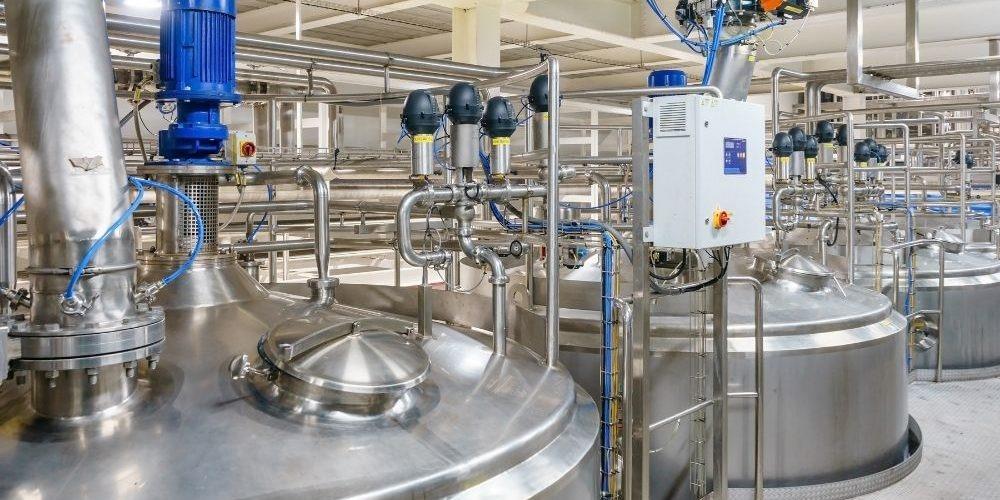
N-Methyl Aniline Production Cost Analysis 2025: Raw Materials, Setup Layout & Machinery Requirements
Setting up a N-methyl aniline production plant requires access to raw materials such as aniline and methanol, basic chemical processing infrastructure, safety systems for handling toxic intermediates, and compliance with environmental regulations. Cost-effective production hinges on scalable reactor design and efficient waste management.
IMARC Group's report, titled “ N-Methyl Aniline Production Cost Analysis Report 2025: Industry Trends, Plant Setup, Machinery, Raw Materials, Investment Opportunities, Cost and Revenue,” provides a complete roadmap for setting up a n-methyl aniline production plant. It covers a comprehensive market overview to micro-level information such as unit operations involved, raw material requirements, utility requirements, infrastructure requirements, machinery and technology requirements, manpower requirements, packaging requirements, transportation requirements, etc.
Request for a Sample Report : https://www.imarcgroup.com/n-methyl-aniline-manufacturing-plant-project-report/requestsample
N-Methyl Aniline Industry outlook 2025:
The N-methyl aniline industry outlook for 2025 indicates stable growth driven by rising demand across dyes, agrochemicals, and pharmaceutical sectors. Expanding industrial applications, particularly in Asia-Pacific, are expected to bolster consumption. Regulatory focus on chemical safety and environmental compliance may influence production practices, encouraging investment in sustainable manufacturing technologies. Market players are likely to prioritize capacity expansion and supply chain optimization to meet evolving end-user requirements.
Key Insights for N-Methyl Aniline Production Plant Setup:
Detailed Process Flow:
-
Product Overview
Unit Operations Involved
Mass Balance and Raw Material Requirements
Quality Assurance Criteria
Technical Tests
Project Details, Requirements and Costs Involved:
-
Land, Location and Site Development
Plant Layout
Machinery Requirements and Costs
Raw Material Requirements and Costs
Packaging Requirements and Costs
Transportation Requirements and Costs
Utility Requirements and Costs
Human Resource Requirements and Costs
Capital Expenditure (CapEx) and Operational Expenditure (OpEx) Analysis:
Project Economics:
-
Capital Investments
Operating Costs
Expenditure Projections
Revenue Projections
Taxation and Depreciation
Profit Projections
Financial Analysis
Profitability Analysis:
-
Total Income
Total Expenditure
Gross Profit
Gross Margin
Net Profit
Net Margin
Key Cost Components of Setting Up a N-Methyl Aniline Plant :
-
Raw Materials: Procurement of aniline, methanol, and catalysts required for synthesis.
Plant Infrastructure: Construction of production units, storage tanks, piping, and utility systems.
Machinery & Equipment: Reactors, distillation columns, heat exchangers, and safety systems.
Utilities: Power, water, steam, and compressed air supply systems.
Labor Costs: Hiring skilled operators, engineers, and maintenance personnel.
Environmental Compliance: Installation of effluent treatment systems and emission control mechanisms.
Licensing & Permits: Regulatory approvals, environmental clearances, and safety certifications.
Working Capital: Inventory, logistics, and day-to-day operational expenses.
Economic Trends Influencing N-Methyl Aniline Plant Setup Costs 2025 :
-
Raw Material Price Volatility: Fluctuations in the global prices of aniline and methanol, driven by crude oil trends and supply chain dynamics, directly impact input costs.
Inflationary Pressures: Rising costs of construction materials, labor, and utilities due to inflation increase capital and operational expenditures.
Energy Costs: Variability in electricity and fuel prices affects the overall cost of chemical processing and utility operations.
Interest Rates: Higher borrowing costs can elevate capital investment burdens for new plant setups.
Regulatory Changes: Stricter environmental and safety standards may necessitate additional investments in compliance infrastructure.
Global Supply Chain Disruptions: Ongoing geopolitical tensions and transport delays can lead to higher logistics and procurement expenses.
Browse the Full Report with the Table of Contents: https://www.imarcgroup.com/n-methyl-aniline-manufacturing-plant-project-report
Challenges and Considerations for Investors in N-Methyl Aniline Plant Projects:
-
Regulatory Compliance: Adherence to environmental, health, and safety standards requires significant investment in monitoring and mitigation systems.
Feedstock Availability: Ensuring consistent supply of high-purity aniline and methanol is critical to maintain uninterrupted production.
Market Volatility: Fluctuating demand in end-use sectors such as dyes, agrochemicals, and pharmaceuticals may impact profitability.
Technological Requirements: Need for advanced process technologies to optimize yield, reduce emissions, and ensure cost-efficiency.
Capital Intensity: High upfront investment in infrastructure, equipment, and utilities can extend the return-on-investment timeline.
Waste Management: Proper treatment and disposal of toxic by-products are essential to avoid legal and environmental risks.
Global Competition: Entry of low-cost manufacturers from Asia can pressure margins and necessitate differentiation through quality or sustainability.
Conclusion:
In conclusion, the N-methyl aniline industry presents promising opportunities driven by its critical role in various downstream sectors, including dyes, agrochemicals, and pharmaceuticals. However, establishing a production facility involves careful consideration of multiple cost components, regulatory requirements, and market dynamics. Economic trends such as raw material price volatility and inflation further influence setup and operational costs. Investors must navigate environmental compliance, technological demands, and global competition to ensure long-term viability and profitability. Strategic planning, sustainable practices, and supply chain resilience are essential for success in this evolving chemical manufacturing landscape.
About Us:
IMARC Group is a global management consulting firm that helps the world's most ambitious changemakers to create a lasting impact. The company excel in understanding its client's business priorities and delivering tailored solutions that drive meaningful outcomes. We provide a comprehensive suite of market entry and expansion services. Our offerings include thorough market assessment, feasibility studies, company incorporation assistance, factory setup support, regulatory approvals and licensing navigation, branding, marketing and sales strategies, competitive landscape, and benchmarking analyses, pricing and cost research, and procurement research.
Contact Us:
IMARC Group
134 N 4th St. Brooklyn, NY 11249, USA
Email: sales[@]imarcgroup.com
Tel No:(D) +91 120 433 0800
United States: (+1-201971-6302)
Legal Disclaimer:
MENAFN provides the
information “as is” without warranty of any kind. We do not accept
any responsibility or liability for the accuracy, content, images,
videos, licenses, completeness, legality, or reliability of the information
contained in this article. If you have any complaints or copyright
issues related to this article, kindly contact the provider above.

















Comments
No comment